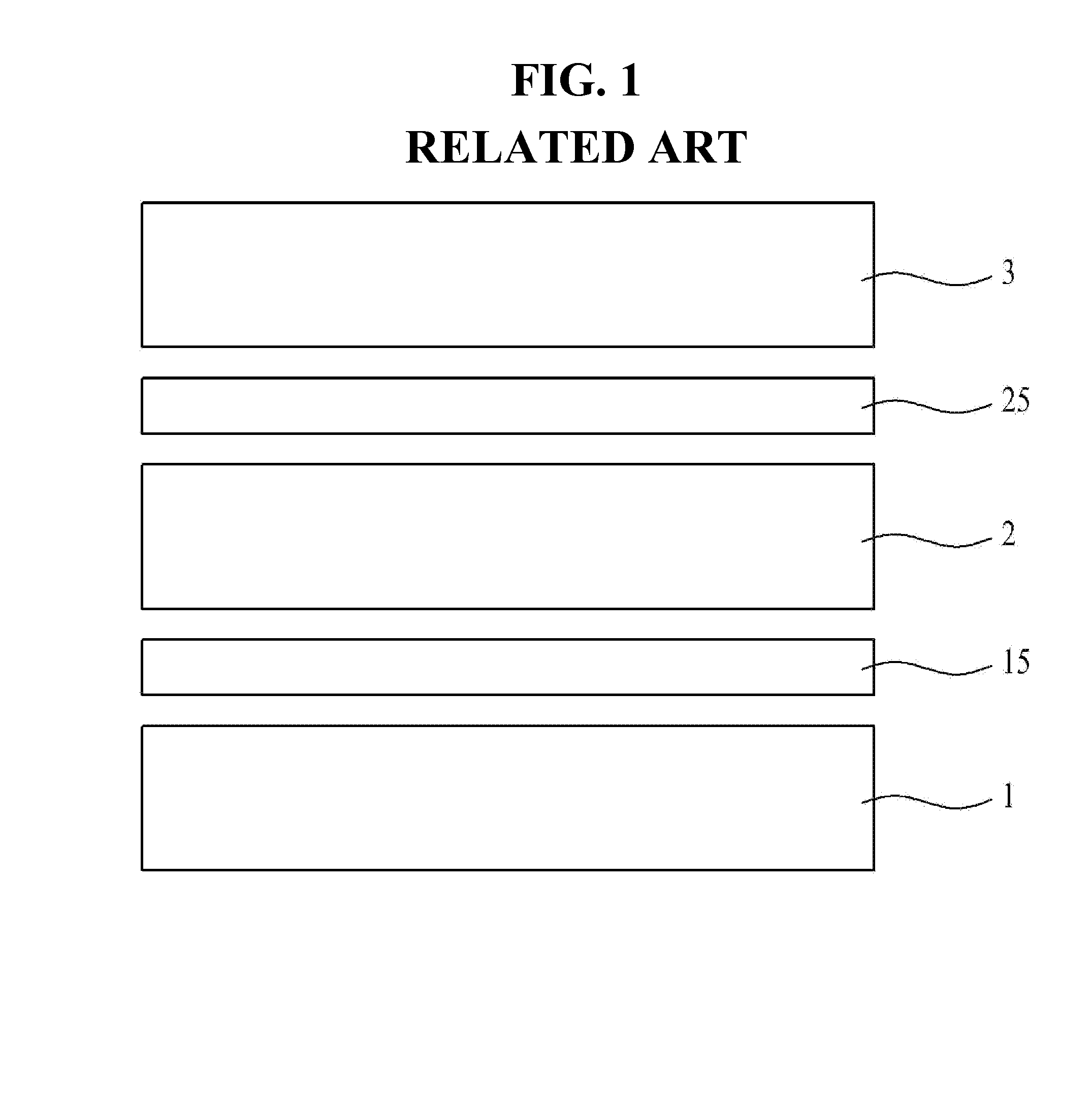Organic Light Emitting Display
a light-emitting display and organic technology, applied in the field of organic light-emitting displays, can solve the problems of difficult process for forming organic light-emitting displays, difficult realization of thin and flexible organic light-emitting displays, increased hardness and thickness, etc., and achieve the effect of preventing permeation of moistur
- Summary
- Abstract
- Description
- Claims
- Application Information
AI Technical Summary
Benefits of technology
Problems solved by technology
Method used
Image
Examples
first embodiment
[0084]FIG. 5 is a plan view illustrating the present invention. FIG. 6 is a sectional view taken along the line II-II′ of FIG. 5. FIG. 7 is a sectional view taken along the line III-III′ of FIG. 3.
[0085]As shown in FIGS. 5 to 7, a structure of the second buffer layer 220 according to the first embodiment of the present invention will be described.
[0086]As shown in FIG. 5, the second buffer layer 220 includes an active region where a first electrode 2331 and a second electrode 2332 sensing touch intersect each other, and a dead region disposed out of the active region.
[0087]Here, a touch pad portion including a plurality of touch pads 2351b spaced from one another is defined in a part of the dead region of the second buffer layer 220. As shown in FIG. 2, the touch pad portion 2350 is disposed at both edges of the second buffer layer 220.
[0088]Also, in the dead region, the ends of the first electrode 2331 and the second electrode 2332 are connected through routing lines 231b and 231c ...
second embodiment
[0098]FIG. 8 is a plan view illustrating the present invention. FIG. 9 is a sectional view taken along the line IV-IV′ of FIG. 8.
[0099]As shown in FIGS. 8 and 9, the second buffer layer of the organic light emitting display according to the second embodiment of the present invention has the same structure as that of the first embodiment in that the third interlayer insulating film is formed in the touch pad and the surroundings thereof (third interlayer insulating film is not formed in the active region).
[0100]In this case, since the edge of the sealant 450 directly contacts the third interlayer insulating film 236 formed of an inorganic film material, the inorganic film material capable of serving as a barrier against foreign matter such as moisture is present at the edge of the sealant 45 and contact characteristics of the touch pad can thus be stably maintained even after environmental reliability testing which is performed by exposing the touch pad for a long period of time unde...
third embodiment
[0102]FIG. 10 is a plan view illustrating the present invention. FIG. 11 is a sectional view taken along the line V-V′ of FIG. 10.
[0103]As shown in FIGS. 10 and 11, in the third embodiment of the present invention, the upper layers of the touch pad correspond to transparent conductive films 233 and 235 and the uppermost layers of the second buffer layer 220 that contact the edge of the sealant 450 correspond to the transparent conductive films 233 and 235. In this case, a plurality of touch pads 2351b in the touch pad portion 2350 are isolated through spaced transparent conductive films 233 and 235, the transparent conductive films 233A and 235A are formed in the dead region disposed outside of the touch pad portion 2350, and the surface that contacts the sealant 450 and the surface of the exposed dead region correspond to transparent conductive films in regions excluding the touch pads, thus preventing effects of moisture and exterior air on the interlayer insulating film of the to...
PUM
 Login to View More
Login to View More Abstract
Description
Claims
Application Information
 Login to View More
Login to View More - R&D
- Intellectual Property
- Life Sciences
- Materials
- Tech Scout
- Unparalleled Data Quality
- Higher Quality Content
- 60% Fewer Hallucinations
Browse by: Latest US Patents, China's latest patents, Technical Efficacy Thesaurus, Application Domain, Technology Topic, Popular Technical Reports.
© 2025 PatSnap. All rights reserved.Legal|Privacy policy|Modern Slavery Act Transparency Statement|Sitemap|About US| Contact US: help@patsnap.com



